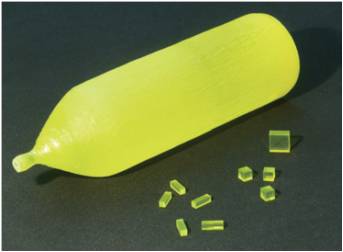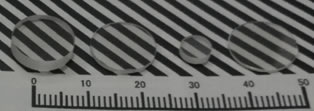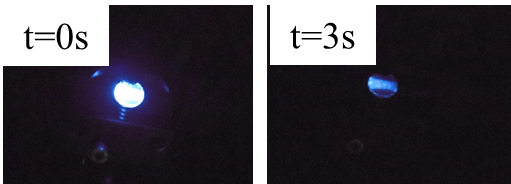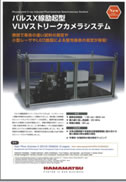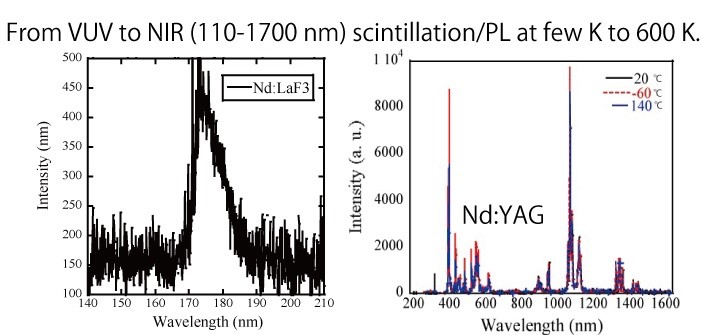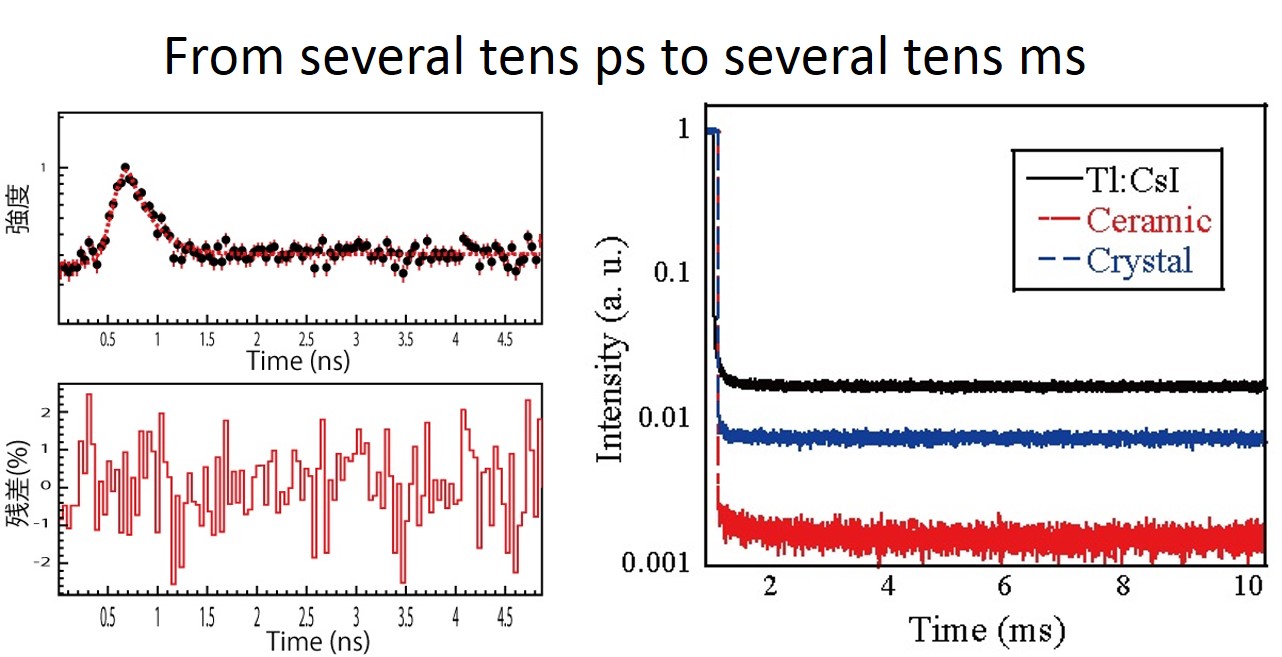Research topics
Measurement of radio active isotopes
The main aim of this group is to measure radio active isotopes with high accuracy. For this purpose, we develop radiation detectors by using ionizing radiation induced luminescent materials and analytical methodologies. In addition, semiconductor detectors are also investgated.
In addition to analysis based on basic semiconductor physics, we investigate analytical ways for ionizing radiation induced luminescence phenomena.
Crystal scintillators
Generally, single crystals are used for scintillators. In this group, basic physical properties of oxide, fluoride, chloride, bromide, and iodide scintillators are studied. As well as scintillation properties, other luminescent properties of materials are investigated. Some crystals are made by coraborative companies or universities, and some are made in our laboratory mainly by FZ.
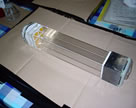
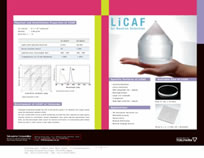
From left to right, scintillation detector onboard Suzaku satellite, LiCaAlF6 scintilaltor for neutron detectors (Tokuyama), and Ce doped GAGG scintillator for gamma-ray detectors (Furukawa). Basic research phases have finished in these scintilaltors and now we study applications of them. In addition to improvement of these scintillators, novel scintillators are under development.
Transparent ceramic scintillators
Owing to a technical breakthrough in laser fields, now transparent ceramics are available and applied for optical applications including scintillators. Although transparent ceramic can be fabricated in cubic structure materials, they have some advantages when compared with single crystals. Some materials are synthesized by coraborative companies or universities, and some are made in our laboratory mainly by SPS.
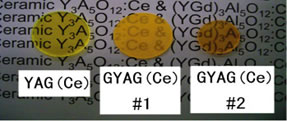
The left panel shows transparent ceramic Ce-doped Gd-YAG scintillators (Master thesis of T. Yanagida, and T. Yanagida et al., NIM-A 579 23 2007).The right panel exhibits Yb3+-doped ultra fast scintillators with collaboration of Konoshima Chemical (T. Yanagida et al., APEX 4 106401 2011).
Glass scintillators
Glasses are clasified as a part of transparent ceramic, we separate them with avobe transparent ceramic scintillators. Although a freedom of the material design is quite high, in scintillator applications, practically applied materials are rare. We positively think the present situation because there are a lot of frontiers for research. Some materials are synthesized by coraborative universities, and some are made in our laboratory mainly by conventional melt quenching.
Phosphorescence materials
Scintillators and laser flush immediately after the excitation. On the other hand, phosphorescence materials continue to emit for several minutes-hours after the excitation. We study such phoephorescence materials.
This figure is an example of blue phosphorescence material (S. Wakahara, T. Yanagida, Y. Fujimoto et al., Opt. Mater., 35 558 2012).
OSL, TSL, and RPL for dosimeter applications
Dosimeter has complementary relation with scintillators so that we study OSL, TSL, and RPL phenomeno in solid state materials. Our group is the only group in the world investigating both scintillators and dosimeters from material synthesis to detector applications within one group.
TSL glow curve (keft)、OSL (cennter), and example of RPL dosimeter of Chiyoda Technol. (right).
Photodetectors
Generally, scintillators are used with photodetectors which convert scintillation photons to electrons. The most famous photodetector is a solar cell (Si). Unlike solar cells, photodetectors in our research field must detect quite small number of photons (several tens-hundreds photons) and widely differ with solar cells which detect numerous photons. In this labo, photodetectors including Si (PD, APD, G-APD), widegap materials, AlGaN, and diamond are investigated.
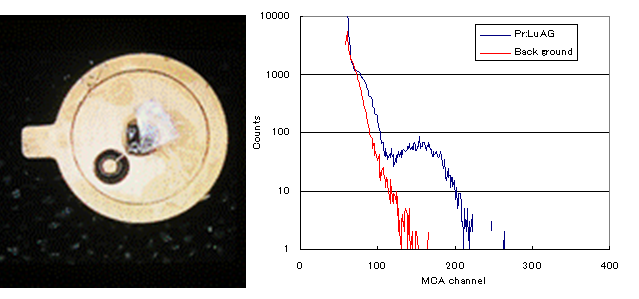
The left figure shows GaN + Pr:LuAG scintillation detector for radiation detection uses (K. Kamada, T. Yanagida, et al., NIM-A, 610 215 2008). The right panel exibits to measure intrinsic energy resolution of scintillators by using Si-APD.
Development of instrumentations for basic physics
Development of instruments are one of the main themes of this group. Up to now, we joined Suzaku satellite, Positron Emission Mammography (PEM), and neutron detector in PoGO-light projects, and pulse X-ray streak camera system (below, T. Yanagida et al., APEX 3 056202 2010) is developed in our group.
Above figure represents pulse X-ray streak camera system which is a product of Hamamatsu Photonics. In basic science, sometimes we must develop new original instruments to observe new phenomenon.
Luminescence properties
From VUV to NIR (110-1700 nm), PL, scintillation, and some dosimeter properties are observed. Timing properties are evaluated from several hundreds ps to several tens ms in PL and scintillation. In phosphorescence and dosimeter evaluations, longer (s to few days) observations are possible. Temperature range is from few K to 600 K in PL, scintillation, and TSL. Such experiments are possible in our laboratory.










